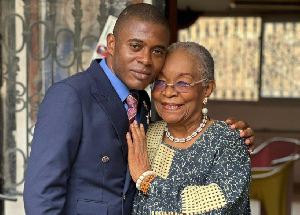Education and Religion are the same in context and symbolism though with different missions playing an enlighten role in the society. But Educational institutions owned by the state of Cameroon is a complicated multifaceted mitigating disaster and confusion for students, present and future kids of the nation writes Cameroon Concord.
Academic and Learning Schools, Colleges and Universities come with great powers. And again knowledge is power. The embattled current national academic institutions and their curriculum and pedagogy in all state learning institutions at the pre-nursery and nursery, primary, secondary and high schools including universities level in Cameroon is in complete variance with the challenges and growth of modern economy and state.
Even the highly and most fervent professors that have occupied Educational Ministries and Higher Academic Institutions in the country with names like Prof. Joseph Owona, Prof. Peter Agbor Tabi, Prof. Narcisse Mouelle Kombi, Prof. Pierre MoukoKo Mbonjo, Dr. Dion Ngute and currently, Prof. Jacque Fame Ndongo Minister of Higher Education, Louis Bapes Bapes Minister of Secondary Education,Youssouf epse Adjidja Alim Minister of Basic Education, Madeline Tchuinte Minister of Scientific Research and Innovation, Zacharie Perevet Minister of Employment and Vocational Training cannot help to re-write the wrongs and damage that Cameroon certificates is besieging our academic systems and threaten mayhem in the future of Cameroonian kids.
The horrendous menace and pains by the state-own learning institutions have ignited serious predicament to students equal to an “academic genocide”. And to be accurate it is wreaking havoc with no clear process of salvation even for the next 50years to come.
While thousands of students keep on graduating every year, the reality on the ground is that the level is still an abysmal and shocking situation students are forced to go through in search of jobs to live a comfortable life after completion of studies. Sadly, many Cameroonian students live in a condition that is unacceptable by every standard despite the fact that Cameroon is among the top African countries that has a high rate of literacy.
Education on the Economic Front! When President Amadou Ahidjo came to power, the French by then knew that he was from a remote area where the indigenes are frightening and terribly under-scholarize. Meaning whatever they would tell him to execute, Ahidjo would sheepishly do for even his own academic background as president was pathetic. Just like the iconic Pan-Africanist Nkrumah of Ghana`s vision for Africa, Ahidjo had same for Cameroon.
As president, Ahidjo had seen far ahead of time that economic growth is the ultimate power of a nation and dictates which way to make political friendships. He embarked on a systemic and gradual 10years development plan for the nation. He created a scholarship board for students in both high schools and universities for outstanding performance to be granted scholarship abroad be it Franchophones or Anglophones.
Ahidjo made sure that the scholarships went to the right students and his areas of concern were engineering, law, medicines, Doctors and Professors in prominent disciplines. That is how Cameroonian students came to study in countries like France, UK, US, Germany, Nigeria and even Ghana in Africa.
President Ahidjo did not tolerate any atmosphere whereby students from the lone federal university were not happy either with the administration or restaurant [feeding conditions] through strikes. He at one point told the entire student population the importance of their place in the future of Cameroon`s growth. With a lot of emphasis President Ahidjo was ever ready for negotiation with students to avoid any campus riot.
He understood the values of education and students as genuine opposition in every nation. He did his best to make sure students were comfortable the reason why there were no fees but allowances for university students which were later abolished by his predecessor with impunity by introducing compulsory fees.
President Ahidjo knew that Cameroon was still a young and independent country struggling with many challenges. So, he envisaged that after 10years of studies abroad the students will be well equipped with knowledge to build the nation when they return home.
Enter the Biya Virus When Biya came to power after the resignation of Ahidjo, the Cameroon scholarship scheme witness a spiral of successive corrupt practices and embezzlement of funds allocated for studies abroad. (See CAMEROON CONCORD report on Minister Martin Belinga Eboutou). Even students sent by the Ahidjo regime could no longer get their allowances from the state and their fees paid. Life became very difficult for Cameroonian students on scholarship.
They could no longer count on the state and many could not return home. Yet the government had already put in much investment to educate these exceptional brains for future use. Some abandoned studies and became asylum seekers all in a way to survive.
These were the human resources Ahidjo had envisaged to build a viable and prosperous Cameroon. That was the 10years development plan Ahidjo had prepared and laid down for the next president. Hopes were dashed and the best and the brightest the nation had sent for further studies were now serving western economies. Under the Biya regime, it is no secret on how scholarships are awarded to students. It is based on who you know at what level and not on academic merits.
Certificates are Proof of Cameroon Educational Institutions Judging from the eight state universities, thousands of primary and secondary colleges including professional institutions such as ENAM, IRIC, Ecole Normale, POLYTEC, Ecole des Poste, Ecole des Police, ASMAC, National Gerdamerie school etc, all have only certificates and diplome to show.
It is pointless to train people to acquire skills for which there is or will be no demand. The problem with President Biya and his pro CPDM comedians is that they still after 31 years in power cannot grasp the issue of obtaining an optimal match between that which education supplies and that which production and employment require.
Cameroon’s educational system is at the mercy of Biya and his appointees. Our education curriculum has failed woefully to equip pupils with the ability to cope with rapidly changing future circumstances.
Biya’s educational policy lacks the potential to assist pupils and students to achieve flexibility and a continuing capacity to learn as new ideas, products and processes arise. We of Cameroon Concord believe that appropriate and relevant education for today's world and age should be such that it must be appropriate and relevant not merely for the present day but also for the future.
Technological changes have called forth a whole range of new skills and thereby provided a whole range of new employment possibilities.
The responsibility for causing and for curing unemployment is ascribed to President Biya and his Francophone Beti-Ewondo government which are resisting the introduction of new technologies which have the capacity to provide new employment opportunities. The greater the difference between salaried and self-employment, the stronger the public preference for salaried employment.
The more rigidly the eligibility for salaried employment depends on scholastic attainment, the stronger the public demand for schools and universities. Biya’s Sorbonne professors such as Kontchou, Fame Ndongo, Joseph Owona, Minkwa Shey, Elomo Lysiette, have failed to identify points where the diploma disease or paper qualification syndrome might be resisted.
A Post Office Stamp seller in the person of Ahmadou Ahidjo knew that the being and workings of the educational system are determined more by the economic system than by educational CPDM philosophy that has created Government High Schools in every village in Manyu Division with some having just two teachers and five students.
Opinions of Thursday, 18 September 2014
Auteur: cameroon-concord.com














